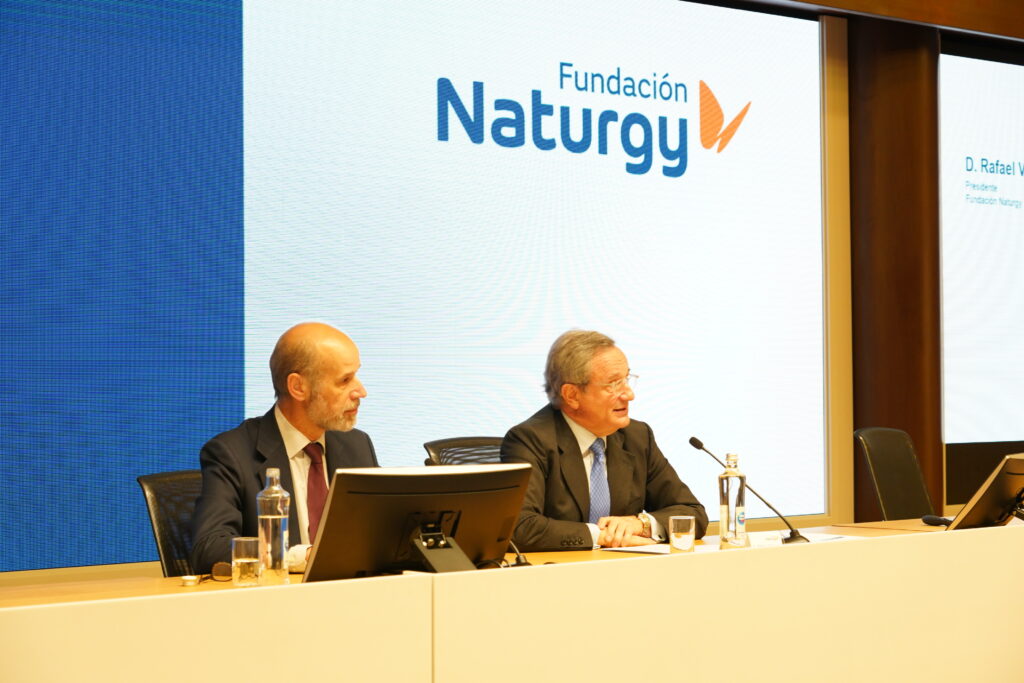Today, the Deputy Executive Director of the International Energy Agency (IEA), Paul Simons, took part in the ‘Transiciones energéticas. Un reto mundial’ seminar, which was organised by the Naturgy Foundation in Madrid, and the Secretary of State for Energy, José Domínguez Abascal, participated in the opening ceremony.
Simons said: “The energy transition over the next decades will be based on the each country’s consideration of their respective concerns regarding energy security, sustainability and economic growth,” and he stressed: “The Paris Agreement and the COP24 Rulebook will require significant effort in energy efficiency and renewable energy.”
The Deputy Director of the IEA, a leading global organisation in the field of energy, confirmed: “The rapid growth of electricity will lead to great opportunities, but the market designs must provide electricity and flexibility to ensure the secure transitions are viable.” “It is essential to use more bioenergy, wind, solar and other renewable energies beyond the power sector, including fuels and raw materials based on hydrogen,” he said. According to Simons, “the energy transitions are complicated in every country and a lot of support is required. There is no perfect solution because each country has a different situation.”
During the opening ceremony of the event, the Secretary of State for Energy, José Domínguez Abascal, stated: “The recent Integrated National Energy and Climate Plan sent to the European Commission considers an ambitious renewable energy implementation plan because we understand they are the cheapest energy sources for Spain. It is a good route for our country and the private sector is prepared to transport it.”
The Chairman of the Naturgy Foundation, Rafael Villaseca, highlighted: “Several studies by the World Energy Council and the IEA indicate that the energy transition is already a global phenomenon, but that it has different development reasons and rates in each country because of factors such as the energy demand, their own energy resources, the existing energy mix and the level of technology innovation development.” “If the objectives and reasons are different, so too are the government policies and the risks and opportunities that arise in each country. This is important because the government policies are the main driver of the energy transition,” stated Villaseca.
The cases of Germany and France
The lead professor at the European School of Management and Technology (ESMT Berlin), Christoph Burger, took part in the event and took a specific look at the energy transition in Germany. The expert explained that the country started the Energiewende—the name of their energy transition—at the start of the 1990s. “Today, some 30 years later, 95% of the population continues to support the development of renewable energy. However, they complain that the Energiewende is not quick enough and that it is actually too expensive, chaotic and unjust.”
Burger published the results of an analysis of eight countries and seven business models which “will indicate the principles of governance, the new business models and the basic competences for an uncertain energy future”. These competences include digitalisation, customer-centricity and the combined associations and services.
The Director of the Climate Programme of the Institute for Sustainable Development, Lola Vallejo, presented the legislative framework of the climate action in France, as well as an evaluation of the progress in reducing the carbon emissions in key sectors such as energy and transport. Vallejo explained: “France has set, by law, the objective of reducing its emissions by 80% compared with 1990 (2015), as well as a system of five-year carbon budgets. After being elected, Macron’s Minister of the Environment committed the country to reaching carbon neutrality by 2050 in his Climate Plan (2017).”
“France is currently updating its long-term strategy to reduce emissions. In the last two years, emissions have increased, so the government is adopting measures to triple the use of wind energy and increase photovoltaic energy fivefold,” he added.
At the closing session of the event, the Managing Director of the Institute for the Diversification and Saving of Energy (IDAE), Joan Herrera, highlighted the “extraordinary” challenge of the energy transition because “we are the first generation who will see the results of climate change and the last generation who will be able to stop it. We have a moral responsibility. Climate change is the main challenge humanity faces in the 21st century.” At the same time, he committed to the energy aspect and positioned the objective of the transition as “a turning point that enables us to reinvigorate the economy and reindustrialise Spain. If this country has an opportunity, it is the energy transition”.
The Managing Director of the Naturgy Foundation, Martí Solà, stated: “It is important that the creation of an energy transition strategy in Spain takes into account the guarantee of supply, a competitive international cost and an estimated environmental impact within the international agreements signed by Spain.”
The Naturgy Foundation and its mission to train and raise social awareness
This seminar is part of the training activities organised by the Naturgy Foundation in different Spanish cities on issues relating to energy and the environment in order to foster a rational use of energy resources and encourage sustainable development. Set up by the power company in 1992, the Naturgy Foundation is also engaged in social action programmes both nationally and further afield, by influencing particular initiatives aimed at alleviating energy vulnerability. In terms of culture, it promotes initiatives geared towards both preserving and communicating the historical heritage of the gas and electricity sector.
